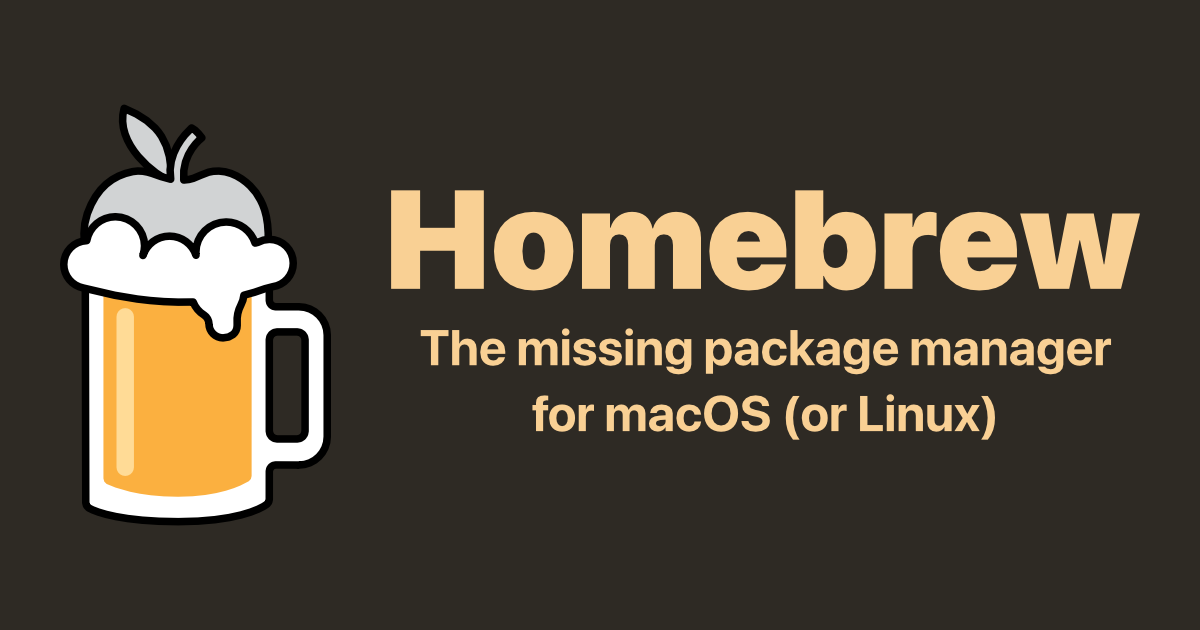Brewry Mac OS
Brewry Mac OS
New slot machines 2019. Jekyll on macOS Install Command Line Tools. To install the command line tools to compile native extensions, open a terminal and run. Homebrew is an open-source package manager for macOS that offers an easy way to install software and tolls through the command line. If you are a coder, developer, Terminal lover, or more tech-savvy than an average Mac user, you can use Homebrew to simplify software installation on your Mac.
Since I switched Apple as my main computer, I was running Mac Ports https://www.macports.org/ However with the release of macOS Mojave, there was no support and the mac ports stopped working. I had to scramble because there is a lot of apps I use from the Linux days that are not natively available on macOS (e.g. sipcalc (best subnet calculator. ever), telnet (to test ports), and wget (pulling down websites)). Was i surprised when Mac Ports did not have a build yet for Mojave. I had always known of Home Brew but since I had already installed Mac Ports, I never really messed with it. As of this writting, Mac Ports does not have support for Mojave but Home Brew does…. so I switched.
Home Brew has a super easy deployment method. You need to type the command below, and it does the rest.
Once you hit enter, you will see the following screen

You can go ahead and hit Enter. After entering your password and enter, it will start the install process.
Home stretch
Sacrament i. mac os. All done. Now to install applications you need to issue the following command
brew install %application-name%
(e.g. brew install wget or brew install sipcalc)
Install Command Line Tools
To install the command line tools to compile native extensions, open a terminal and run:
Install Ruby
Jekyll requires Ruby v2.4.0 or higher.macOS Big Sur 11.x ships with Ruby 2.6.3. Check your Ruby version using ruby -v.
If you’re running a previous version of macOS, you’ll have to install a newer version of Ruby.

With Homebrew
To run the latest Ruby version you need to install it through Homebrew.
Add the brew ruby and gems path to your shell configuration:
Relaunch your terminal and check your Ruby setup:
You’re now running the current stable version of Ruby!
With rbenv
People often use rbenv to manage multipleRuby versions. This is very useful when you need to be able to run a given Ruby version on a project.
Restart your terminal to apply your changes.Next, you can install the Ruby version you want. Let’s install the latest stable version:
That’s it! Head over to rbenv command references to learn how to use different versions of Ruby in your projects.
Install Jekyll
After installing Ruby, install Jekyll and Bundler.
Local Install
Install the bundler and jekyll gems:
Get your Ruby version:
Append your path file with the following, replacing the X.X with the first two digits of your Ruby version: https://evliveonlinedepositsharkroulette.peatix.com.
Check that GEM PATHS: points to your home directory:
Every time you update Ruby to a version in which the first two digits change, update your path to match.
Global Install
We recommend not installing Ruby gems globally to avoid file permissions problems and using sudo. South park gambling.
On Mojave (10.14)
Brewery Marco Island
Because of SIP Protections in Mojave, run:
Brewery Microscope
Before Mojave (<10.14)
Run:
Troubleshooting
How To Easily Install Dockers Using Brew In Mac OS
See Troubleshooting or ask for help on our forum.
Brewry Mac OS
